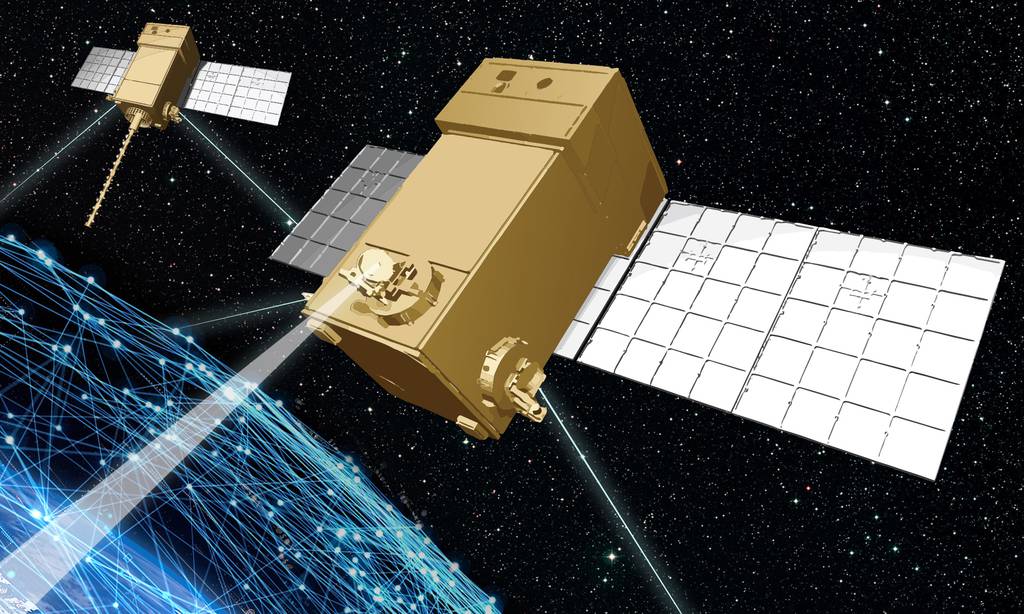WASHINGTON — The U.S. Space Force’s $30 billion budget request for fiscal 2024 is 13% higher than what Congress enacted last year and calls for continued growth in its missile tracking, launch and satellite communications missions, according to budget documents.
“The funding is a critical step to combat emerging space threats and to meet our pacing challenge,” the service said in the overview documents released Monday. “The focus is on long-range kill chains, resilient missile warning and missile tracking, operational test and training infrastructure, protecting and enhancing strategic systems and bolstering foundational elements.”
The bulk of the Space Force’s request, just over $19 billion, would fund development of satellites, ground systems and enabling technology. The service’s focus on research and development is a continuation from its fiscal 2023 budget request, which sought nearly $16 billion for those efforts.
Air Force Secretary Frank Kendall, who oversees both services, said the funding gives the Space Force options as it considers how to make its satellites more resilient against threats in space.
“If we don’t make those investments, we won’t have the options even to consider doing those things,” he said during an embargoed briefing before the budget release. “The entirety of what we’re trying to do here to get to the next-generation capabilities is being driven mostly by the pacing challenge of the [People’s Republic of China].”
The service’s request also supports a shift the service is making toward buying more small satellites launched in a diverse range of orbits, Kendall said.
“If we’re going to have resilient architectures, we have to do those things,” he said. “There’s no choice about that.”
Funding future capabilities
While the Space Force has yet to release detailed funding projections for all of its programs, its overview documents offer insight into some efforts.
The service’s research and development funding request includes $2.3 billion to fund the Resilient Missile Warning and Tracking program, which will feature satellites that track ballistic and hypersonic missiles. The proposed budget represents a $1 billion increase over the Space Force’s FY23 funding and about $800 million more than what it said it would need in last year’s budget projections.
Another $2 billion will, if approved by Congress, support the Space Development Agency’s effort to create a network, or Transport Layer, of data-sharing communication satellites in low Earth orbit, about 1,200 miles above the planet.
The Space Force requests a combined $1 billion for two other satellite communication programs — $633 million for Evolved Strategic Satellite Communications and $360 million for Protected Tactical Satellite Communications.
Evolved Strategic SATCOM satellites will provide classified communications for the Defense Department’s nuclear-capable bombers, ballistic missiles and submarines. The Protected Tactical SATCOM is a rapid prototyping effort to improve anti-jam capabilities using a new Protected Tactical Waveform. Boeing and Northrop Grumman are designing PTS prototypes that will fly in on-orbit demonstrations in 2024.
Launch and range investments
About $2.6 billion of the Space Force’s $4.7 billion procurement account will pay for the 15 launches the service plans to fund in fiscal 2024 — up from just 10 launches in FY23. Five of those missions will carry SDA satellites and the remaining 10 will be for other Space Force missions.
The budget also proposes funding to support improvements to the Space Force’s primary launch ranges at Cape Canaveral Space Force Station in Florida and Vandenberg Space Force Base in California, which the service expects will support a total of 134 government and commercial launches in 2023. The Space Force’s operation and maintenance request includes $75 million for about 85 projects that will support the modernization initiative known as “Range of the Future.”
Courtney Albon is C4ISRNET’s space and emerging technology reporter. She has covered the U.S. military since 2012, with a focus on the Air Force and Space Force. She has reported on some of the Defense Department’s most significant acquisition, budget and policy challenges.








